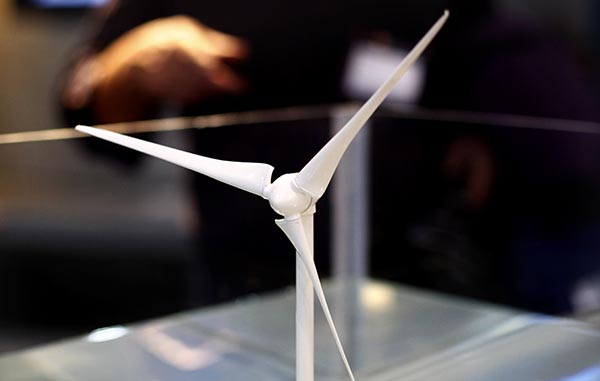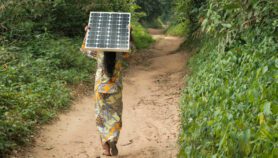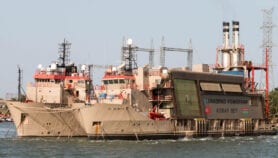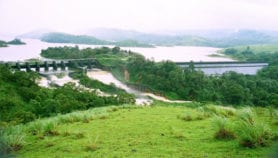By: Mohamed Abu Shaar and Mohammed Adwan
Send to a friend
The details you provide on this page will not be used to send unsolicited email, and will not be sold to a 3rd party. See privacy policy.
[Gaza] Two Gazan researchers are preparing to help tackle the region’s energy crisis by making their own wind turbines, after imports of the technology were banned by Israel.
Israel and Egypt have subjected Gaza to a blockade since Hamas, a Sunni Islamic organisation, took control of the of the 365 square kilometre coastal territory in 2007.
Researchers Mohamed Elnaggar and Ezzaldeen Edwan, at the Department of Engineering at Palestine Technical College, Deir al-Balah, decided to manufacture the turbines locally after their research project, which won a German-Palestinian cooperation grant, hit its first obstacle on the ground.
“The Israeli authorities refused to grant the German partner permission to allow the turbines into the district," the researchers told SciDev.net.
Energy generation is a critical issue for Gaza. The Palestinian Energy and Natural Resources Authority estimates Gaza Strip's daily needs of electricity at 400-600 megawatts, while Gaza's electricity generation capability cannot provide more than 60 per cent of these needs.“Its parts are available in [the] Gaza Strip and its components are not complicated,”
Ezzaldeen Edwan
Submitted by the Palestine Technical College, the research won the grant along with other eleven projects submitted by researchers from the Palestinian universities, and received €30,000 (US$35,500).
In August, the open access journal Energies published the details of the research.
"We started manufacturing the prototype of the turbine in cooperation with three engineers, as its parts are available in [the] Gaza Strip and its components are not complicated," said Edwan. They hope to start full scale manufacturing in December.
"The turbine will be ready in less than six months," said Elnaggar, adding it would have a capacity of 5kw/h and will cost no more than US$4,700. He added that they have agreed with the German partner to use part of the allocated funding in the manufacturing of local turbines.
They have identified a location at the top of a residential tower west of Gaza City to run the turbine once it is manufactured, after studying the area and recording their initial observations about the wind speed in it.
"The turbine needs only one square meter to be installed on the roof of the building at a height of 10 meters," Elnaggar said, adding that the presence of high buildings in the district contributes to the success of the idea, saving the cost of building special towers for turbines and attaining the required speed of wind.
The wind speed required to operate the turbine is 2.5m/s, while the average speed in the Gaza Strip is 4 m/sec, and 10m/s on a windy day. The turbine operates at its maximum capacity at 15m/s, “which is difficult to be attained in Gaza all through the year", according to Elnaggar.
"Five turbines will satisfy the needs of a residential building consisting of 20-25 apartments during power outages," he added.
Edwan pointed out that wind energy outperforms the newly expanding photovoltaic system in the Gaza Strip due to the fact that it can be utilized throughout the day, while solar cells produce less in the winter.
Turbines also require less space. "The area [in Gaza] is small, making wind energy, which requires vertical expansion, more feasible than solar cells, which require horizontal extension over large areas," Elnaggar said.
Solar cells also have to be imported, giving the locally produced wind turbines an advantage.
Speaking about the economic feasibility of the project, the researchers said that the usage of a turbine with the capacity of 5 kilowatts/hour with a voltage regulator at a total cost of US$4,700 costs almost the same as a comparable solar system.
However, they said the development and spread of their idea would require international and governmental support.
Mohammed Al-Alami, a renewable energy specialist and owner of a company that manufactures devices used in power generation and storage, said it was a good idea, but pointed out that the turbines needed to overcome obstacles such as a huge fluctuation in wind speed throughout the year.
"If the project achieves the accepted efficiency, it will be a good option and a solution to the problem we face in dealing with solar cells, which is the use of energy storage batteries whose efficiency decreases over time," Al-Alami told SciDev.Net.
Al-Alami added that the culture of renewable energy has spread in recent years in the Gaza Strip, despite its high costs. This is helped by the willingness of local lenders to offer loans for alternative energy projects by Gazans, he said.
This piece was originally published by SciDev.Net’s Middle East & North Africa desk.














